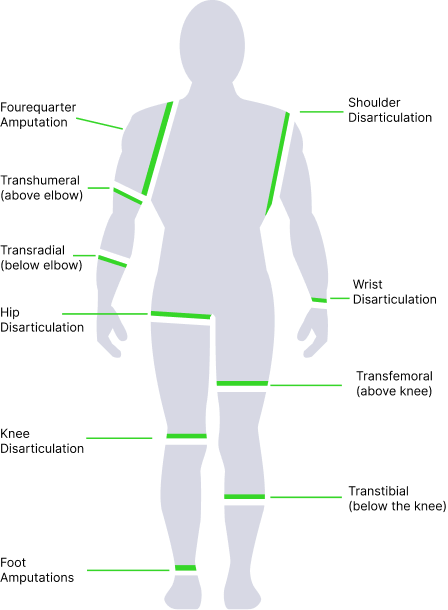Prosthetics
Prosthetics deals with the evaluation, fabrication, and custom fitting of artificial limbs, known as “prostheses” due to amputation because of trauma,disease,congenital deformity.
Prostheses enhance the function and lifestyle of persons with limb loss. The prosthesis must be a unique combination of appropriate materials, alignment, design, and construction. There are 2 main categories of prosthetics: upper extremity and lower extremity prosthetics.
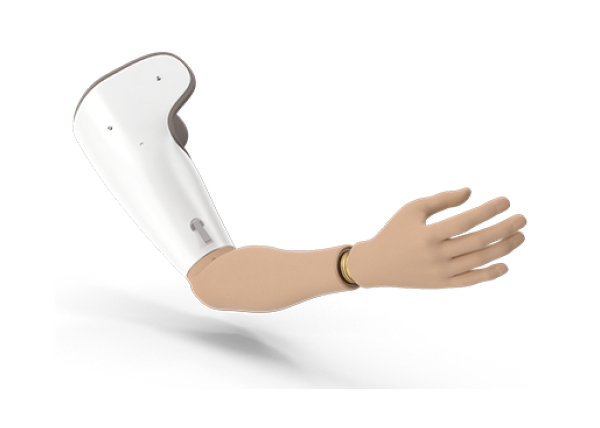
Fourequater Amputation
A forequarter amputation is a surgical procedure that removes the entire upper extremity, shoulder girdle, and scapula. It’s a radical procedure that’s typically only performed when other treatments have failed or limb salvage isn’t possible.
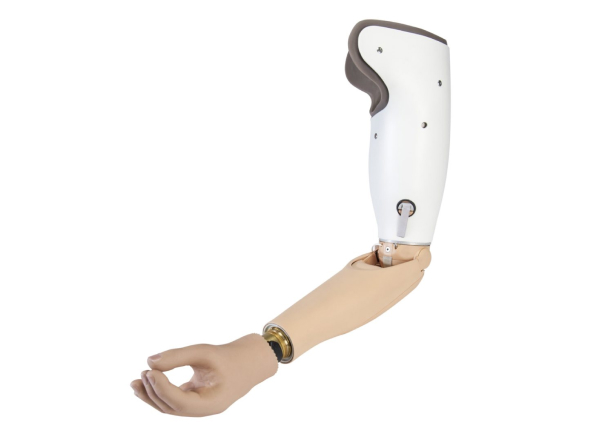
Transhumeral
A transhumeral amputation is a surgical procedure that involves cutting the upper arm bone (humerus) and removing a portion of it, along with the rest of the arm.
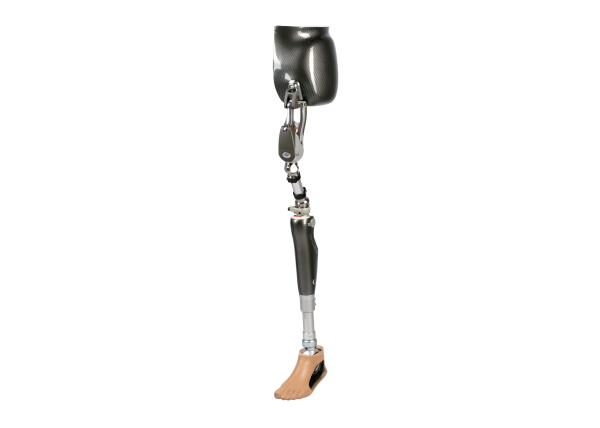
Hip Disarticulation
A hip disarticulation is a surgical procedure that removes the entire lower limb at the hip joint, separating the ball of the femur from the hip socket. It’s a major, radical amputation that’s usually considered a last resort when other treatments are not effective.
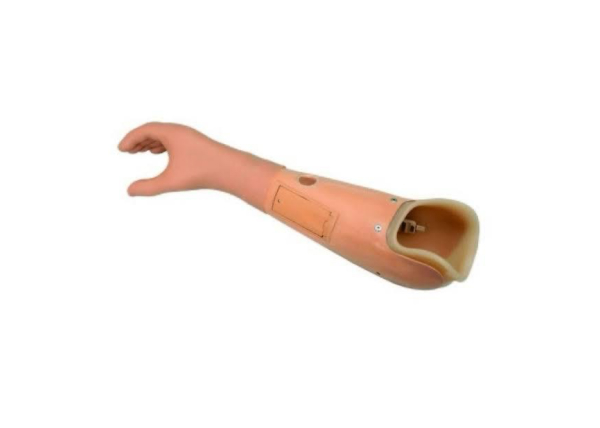
Trans Radial
A transradial amputation is a surgical procedure that removes the hand and the lower portion of the radius and ulna, the bones of the lower arm. It’s a reconstructive option for upper-extremity trauma, infection, malignancy, and ischemia.
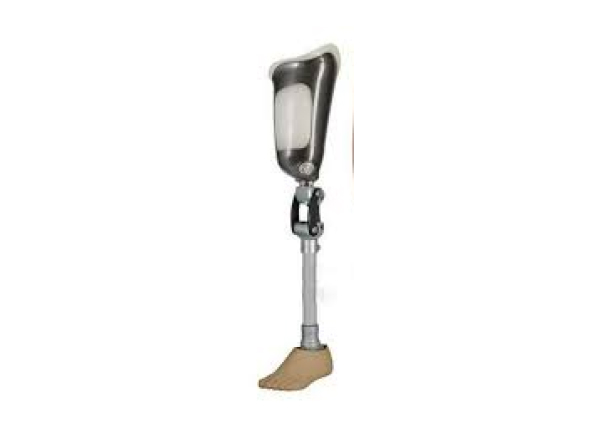
Knee Disarticulation
A knee disarticulation amputation, also known as a through-knee amputation, is a surgical procedure that removes the lower half of the leg through the knee joint.
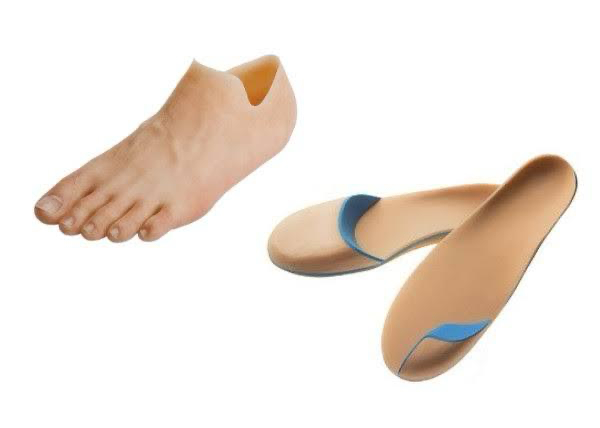
Foot Amputations
A foot amputation is a surgical procedure to remove a portion or all of the foot. It can be a minor or major amputation, depending on the level at which the foot is removed.

Shoulder Disarticulation
A shoulder disarticulation procedure is the surgical separation of the entire arm from the shoulder joint. In this surgery the humerus (upper arm bone) and the entire arm are removed from the scapula (shoulder blade) and clavicle (collar bone). No bones are cut during this surgery.
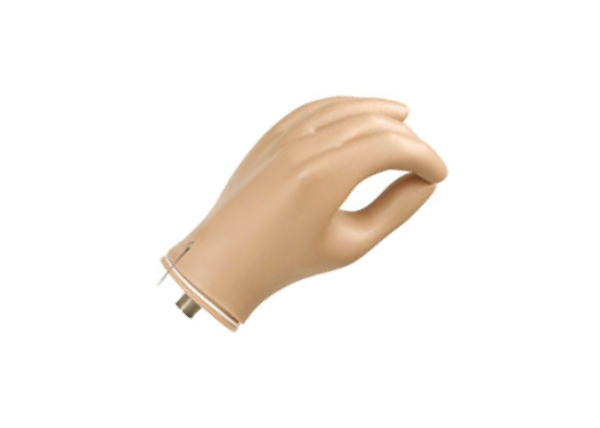
Wrist Disarticulation
Wrist disarticulation is a surgical procedure that removes all hand structures, and is performed when a congenital limb difference or amputation occurs:
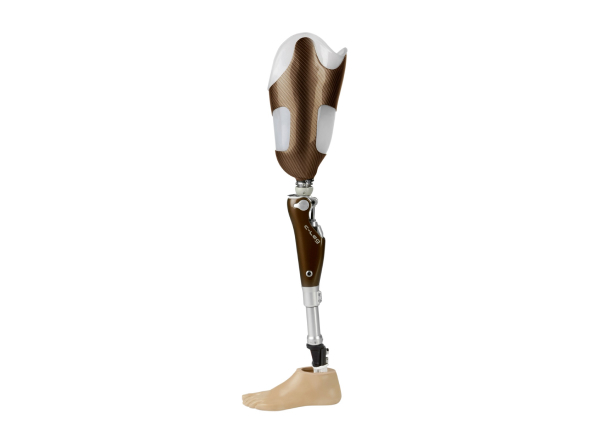
Transfemoral
A transfemoral amputation, also known as an above-the-knee amputation (AKA), is a surgical procedure that removes the lower limb at or above the knee. It’s performed when a limb is severely damaged by trauma, disease, or a congenital defect
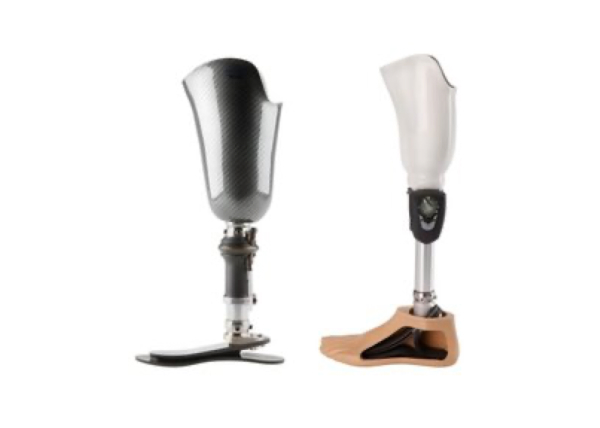
Transtibial
A transtibial amputation, also known as a below-the-knee amputation (BKA), is a surgical procedure that removes the foot, ankle, distal tibia, fibula, and soft tissue structures below the knee. It’s performed when the leg is severely damaged or diseased, and is often a life-saving procedure.
Let's chat
083 279 2169
Get In Touch
Visit Us
24 Barnard Road, Ahmed al Kadi Private Hospital
Annexure 3, Suite 2, First Floor

